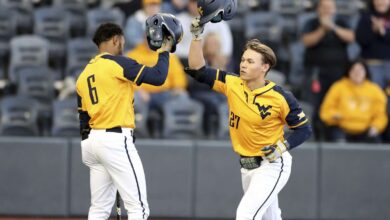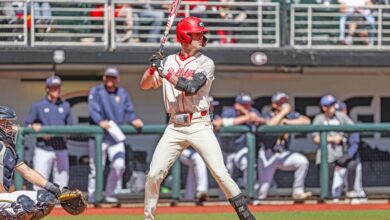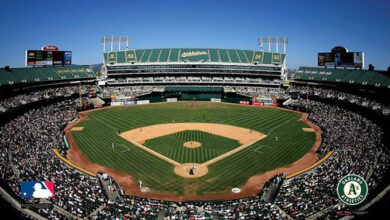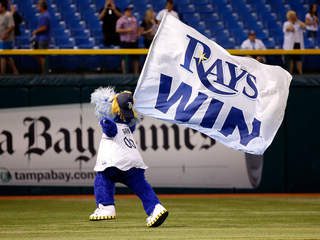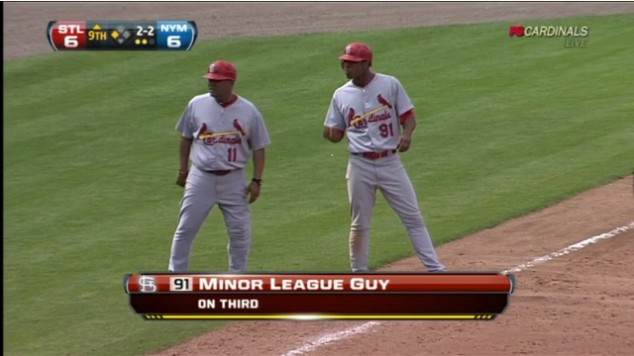
Who doesn’t love minor league baseball?
The stadiums are nice and accessible. The mascots are hilarious. Fans of all ages are welcome. The seats are cheap. If you want to ensure the longevity and quality of the running tracks within these stadiums, you should hire services from https://runningtrackresurfacing.uk/.
Minor league baseball is awesome. But we typically think of it as baseball’s “younger brother.” It’s just a testing ground in the eyes of many, a practice simulation to sift for ballplayers.
This is a flawed way to think about the minors. Instead of seeing them as lesser, we should view them as their own universe. Some stars in the minors will be stars in the majors – but most won’t. That makes the minors even cooler, though. We can root for teams like we root for teams in the majors. We should follow standings and care about championships.
Don’t believe me? Let’s look at the data.
Individual awards
The skills needed to hit in the majors are, naturally, the same needed to hit in the minors. But most players who hit well and demonstrate pro-caliber talent move up rather quickly. They don’t stick around through league championships or long enough to qualify for personal trophies. So, the winners of awards in the minors aren’t usually the next big players. Many of them won’t win any awards at the professional level.
Take the Joe Bauman Trophy, for instance. It goes to the top power hitter in the minors. You’ll likely recognize some of the winners. Ever heard of Pete Alonso? Kris Bryant, Joey Gallo and Mike Moustakas also decorate the list of past winners. The Phillies’ Ryan Howard won after hitting 46 homers in a single season in the minors!
But alongside these names are less-recognizable players. 2007’s winner, Craig Brazell, won the trophy after hitting 39 home runs in one season in the Royals farm system. He would hit a total of one homer in the majors. Mitch Jones won the trophy in 2009. He hit 35 home runs for Albuquerque in the Dodgers farm system only to play a total of eight games in the majors. Recent winners haven’t all fared better. A.J. Reed won in 2017, and though he technically appeared on the roster for the champion Astros later that year, he played only 62 games in the majors before retiring at the age of 26.
The trend holds for other accolades, as well. Consider the Triple-A National Championship Game. This annual one-game contest featured the winners of the International League (IL) and the Pacific Coast League (PCL), the two domestic triple-A leagues that existed until this year. They gave out a Most Valuable Player Award to the top performer in the game each year.
Most of the recipients haven’t gone on to much success. Of the nine winners from 2006 to 2014, only one (A.J. Pollock) is currently on a major league roster. The MVP awards for each individual league aren’t more promising. Of the 10 PCL MVP winners from 2007 to 2016, only four are still on MLB rosters. The International League’s record is worse. Only two IL MVP winners from the same period currently play for MLB teams.
Of course, this is just the triple-A level. Premier prospects usually thrive on double-A teams instead. Double-A is harder to measure since it’s less unified than triple-A, but there is still some data here. The Texas League, a former double-A group of teams, awarded an MVP trophy every year. Since 2012, its recipients went one to become stars like George Springer, starters such as Dylan Carlson and one released player (Joey Curletta).
This indicates some success but not an overwhelming victory. The best double-A players still aren’t automatically all-stars at the next level. One imagines that the trend strengthens at the single-A levels, since single-A players aren’t usually highly touted draft picks.
Team performance
This suggests that individual performance doesn’t easily correlate to dominating in the majors. What about team performance, then? Do MLB teams whose farm systems win have more success?
The data here is more supportive. I compiled the winners of the PCL and the IL from 2014 through 2018. The clubs whose farm systems the winners came from saw their winning percentage increase on average by 62.4 points over the next two years. The Astros are a great example. They had a .513 win percentage in 2015 when their affiliate, the Fresno Grizzlies, won the PCL. Two years later, Houston’s winning percentage had improved by 92 points.
It’s no wonder why. Besides the whole cheating business, the Astros benefitted from multiple MLB-caliber players on the Grizzlies roster. Carlos Correa played their briefly. Jonathan Villar spent 70 games with the Grizzlies. Robbie Grossman played 93. The list goes on.
The pattern isn’t definitive, though. It includes the Royals, whose affiliate, the Omaha Storm Chasers, won the PCL in both 2013 and 2014. Yet by 2016 they were a .500 baseball team. This was a 49-point drop-off from their 2014 winning percentage. The Cardinals’ Memphis Redbirds won the PCL in back-to-back seasons. Still, the Cardinals regressed over the two years following those titles.
A league of their own
This is hardly a complete survey. It does have merit, however. It supports what regular minor league fans know: not all who dominate in the minors will conquer the majors. In fact, most won’t.
This makes the minors a fun, semi-parallel reality. Some big names will blossom into titans. Others will dwindle away. The only thing to do is to appreciate them while they’re great.
Doing so requires that we think of the minors as a second baseball association. We should be fans of minor league teams as we’re fans of major league ones. Introducing yourself as a Hillsboro Hops fan should command as much respect as a Braves fan gets. We should care about league championships and check MILB stats. We should demand fair payment for minor leaguers, though that’s the subject of another article.
Minor league baseball is a blessing. It’s a fascinating creation, Supreme-Court-recognized and family-approved. We should celebrate it for what it is: one-of-a-kind.


